
Testimonial
FemmeAuto : Anpej and evaluation
This article is about the visit of the Agence nationale pour la Promotion de l’Emploi des Jeunes National (ANPEJ) translated as the Agency for the Promotion of Youth Employment during the training of FemmeAuto (Woman Auto) as well as the final evaluation of the training organized by the Office national de Formation professionnelle (ONFP), translated National Office of Vocational Training, on the Management of Small and Medium Enterprises (SMEs).
ANPEJ
The director of guidance, training and integration of the ANPEJ, Mr. Babou FAYE, spoke to the recipients of FemmeAuto during their training, under the invitation of the Operator, Ms. Anta NDIONE, Manager of the Economic Interest Group "Entrepreneurship-Distribution-Construction-Training".
Mr. FAYE's presence was equally relevant, as there was a high proportion of young beneficiaries. This director took the opportunity to talk to them about the importance of having a civic attitude towards their work. In addition, he stressed that young people, who are the next generation and tomorrow’s leaders, must take their jobs seriously and put all their efforts into it, not knowing how, by the quality of their work, they can have a positive impact on their neighborhood, family and community.
Here are some pictures of Mr. FAYE speaking to the beneficiaries.
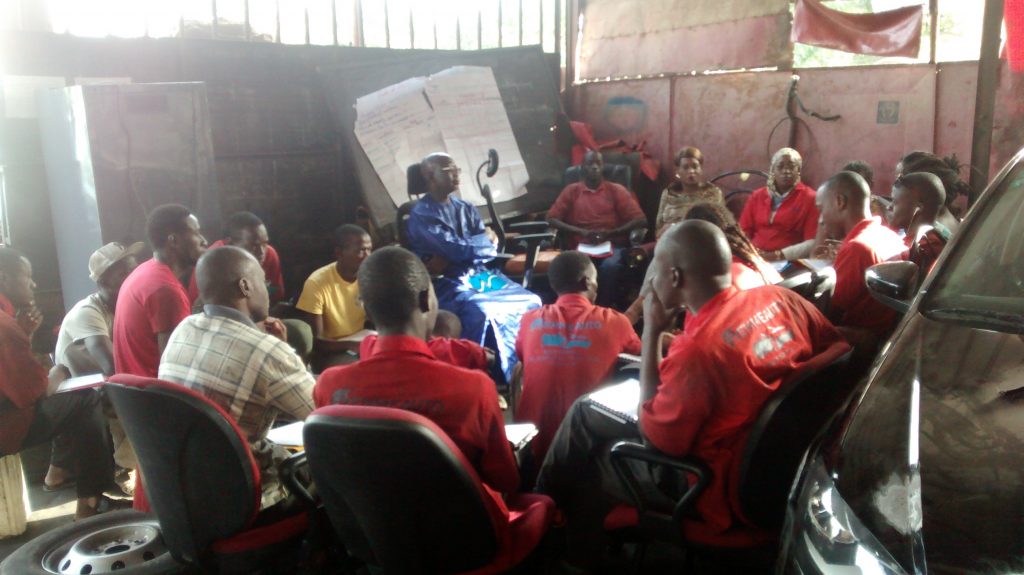
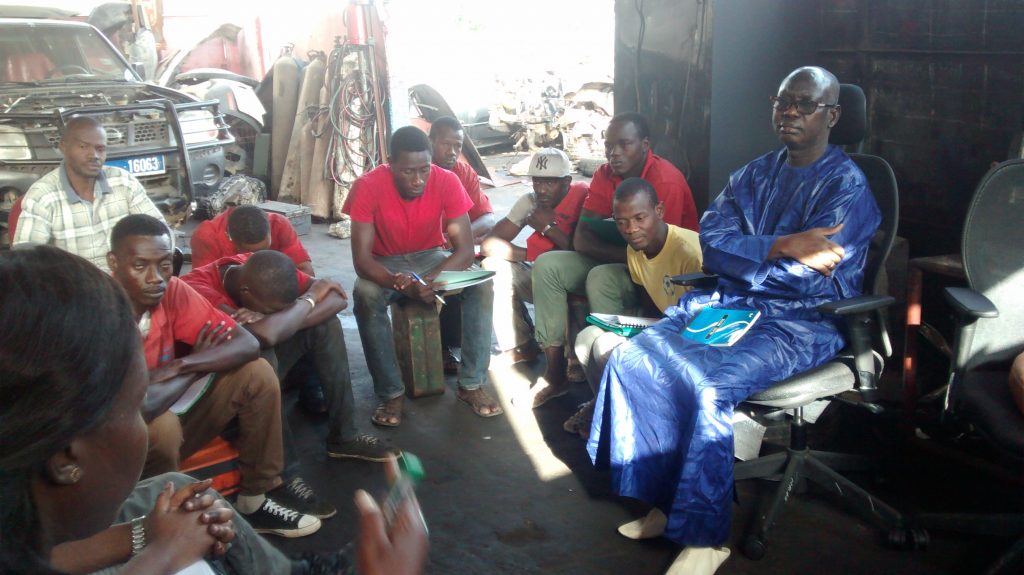 EVALUATION
Finally, the evaluation of the beneficiaries took place on the last day of the training. It was conducted by the officers of the Evaluation and Certifications Directorate of the Office. It is rare for a training engineering consultant, as myself, to attend. Nonetheless, since we thought it was probably the last course evaluation I would be able to experience before the end of my term, I was able to attend. For the case that concerns us, it was carried out by Mrs. NDIAYE Ndeye Soukeyna Fall, of the DEC who carried out the evaluation accompanied by Mrs. Fatou BA, assistant to the DEC.
This is Mrs. NDIAYE who explains to the beneficiaries the progress of the evaluation.
EVALUATION
Finally, the evaluation of the beneficiaries took place on the last day of the training. It was conducted by the officers of the Evaluation and Certifications Directorate of the Office. It is rare for a training engineering consultant, as myself, to attend. Nonetheless, since we thought it was probably the last course evaluation I would be able to experience before the end of my term, I was able to attend. For the case that concerns us, it was carried out by Mrs. NDIAYE Ndeye Soukeyna Fall, of the DEC who carried out the evaluation accompanied by Mrs. Fatou BA, assistant to the DEC.
This is Mrs. NDIAYE who explains to the beneficiaries the progress of the evaluation.
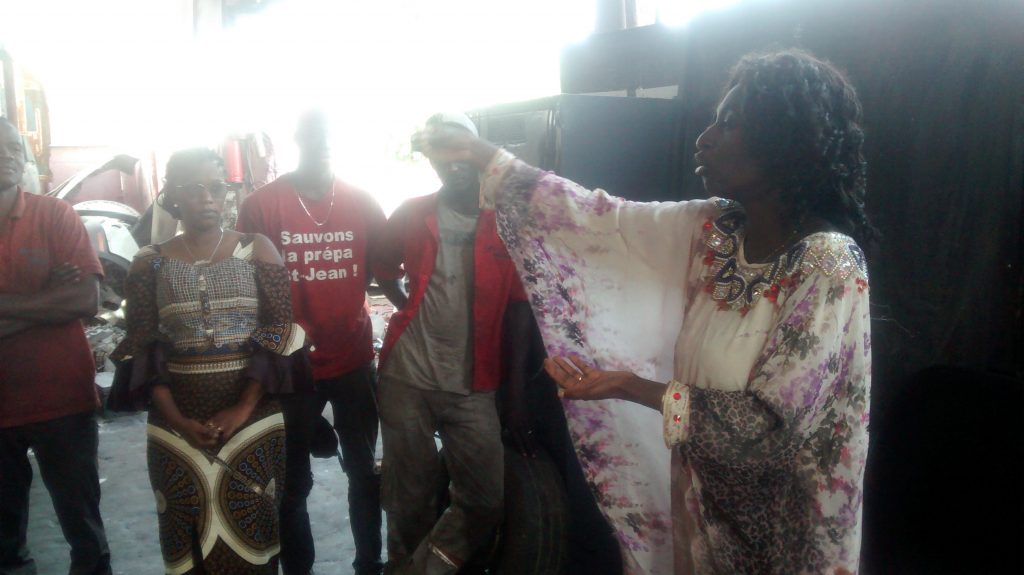 The challenge of this evaluation was that some beneficiaries had a long academic record, while others were almost illiterate. To evaluate fairly, the beneficiaries were divided into groups of about 6 participants. Each had a role to interpret and was individually evaluated on the interpretation of his role.
This is the first team.
The challenge of this evaluation was that some beneficiaries had a long academic record, while others were almost illiterate. To evaluate fairly, the beneficiaries were divided into groups of about 6 participants. Each had a role to interpret and was individually evaluated on the interpretation of his role.
This is the first team.

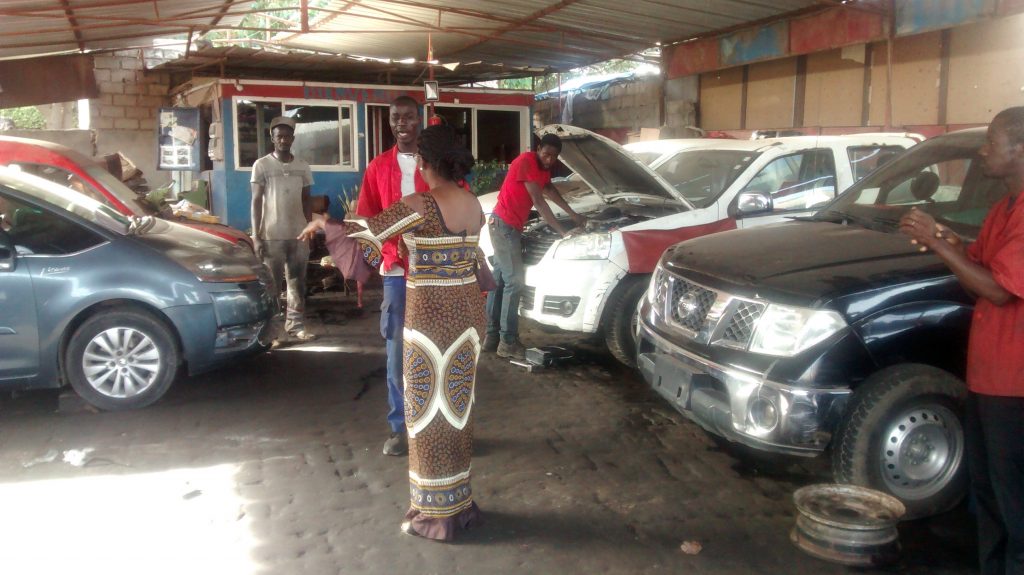 Here is the second team.
Here is the second team.

 The beneficiaries' evaluation of their training was conducted in two ways. One of the evaluations was done in writing and the other is represented by pictures. Thus, all beneficiaries were able to make a fair evaluation and especially in anonymity. See the following image of the two types of evaluation.
The beneficiaries' evaluation of their training was conducted in two ways. One of the evaluations was done in writing and the other is represented by pictures. Thus, all beneficiaries were able to make a fair evaluation and especially in anonymity. See the following image of the two types of evaluation.
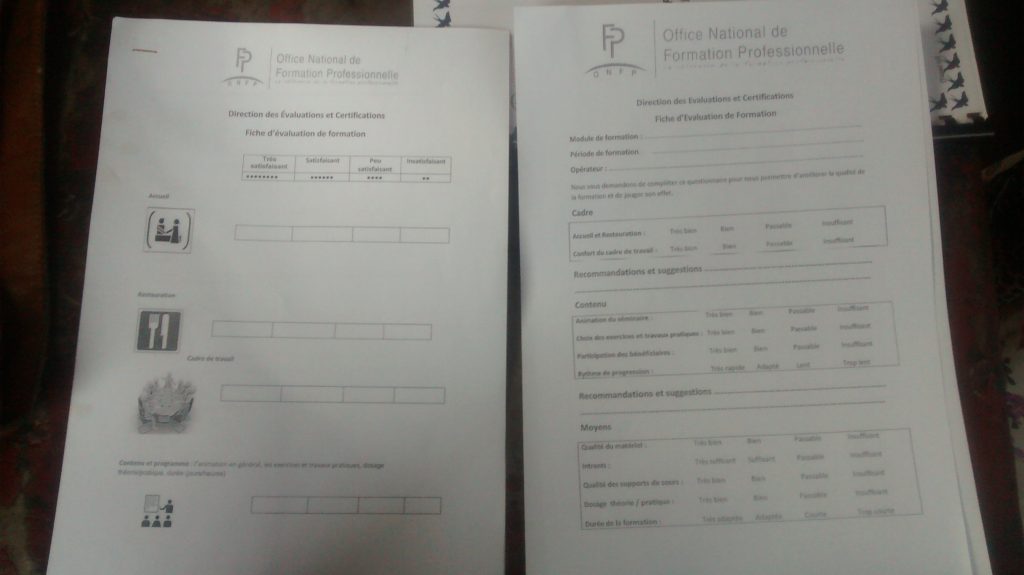 Mrs. BA is providing additional information to a recipient.
Mrs. BA is providing additional information to a recipient.
 To end, here is a testimonial from a beneficiary (it’s in French).
[video width="1280" height="720" mp4="/uploads/Import/VID_20171208_111249349_2024-04-18-193611_ndhf.mp4"][/video]
To end, here is a testimonial from a beneficiary (it’s in French).
[video width="1280" height="720" mp4="/uploads/Import/VID_20171208_111249349_2024-04-18-193611_ndhf.mp4"][/video]

 EVALUATION
Finally, the evaluation of the beneficiaries took place on the last day of the training. It was conducted by the officers of the Evaluation and Certifications Directorate of the Office. It is rare for a training engineering consultant, as myself, to attend. Nonetheless, since we thought it was probably the last course evaluation I would be able to experience before the end of my term, I was able to attend. For the case that concerns us, it was carried out by Mrs. NDIAYE Ndeye Soukeyna Fall, of the DEC who carried out the evaluation accompanied by Mrs. Fatou BA, assistant to the DEC.
This is Mrs. NDIAYE who explains to the beneficiaries the progress of the evaluation.
EVALUATION
Finally, the evaluation of the beneficiaries took place on the last day of the training. It was conducted by the officers of the Evaluation and Certifications Directorate of the Office. It is rare for a training engineering consultant, as myself, to attend. Nonetheless, since we thought it was probably the last course evaluation I would be able to experience before the end of my term, I was able to attend. For the case that concerns us, it was carried out by Mrs. NDIAYE Ndeye Soukeyna Fall, of the DEC who carried out the evaluation accompanied by Mrs. Fatou BA, assistant to the DEC.
This is Mrs. NDIAYE who explains to the beneficiaries the progress of the evaluation.
 The challenge of this evaluation was that some beneficiaries had a long academic record, while others were almost illiterate. To evaluate fairly, the beneficiaries were divided into groups of about 6 participants. Each had a role to interpret and was individually evaluated on the interpretation of his role.
This is the first team.
The challenge of this evaluation was that some beneficiaries had a long academic record, while others were almost illiterate. To evaluate fairly, the beneficiaries were divided into groups of about 6 participants. Each had a role to interpret and was individually evaluated on the interpretation of his role.
This is the first team.

 Here is the second team.
Here is the second team.
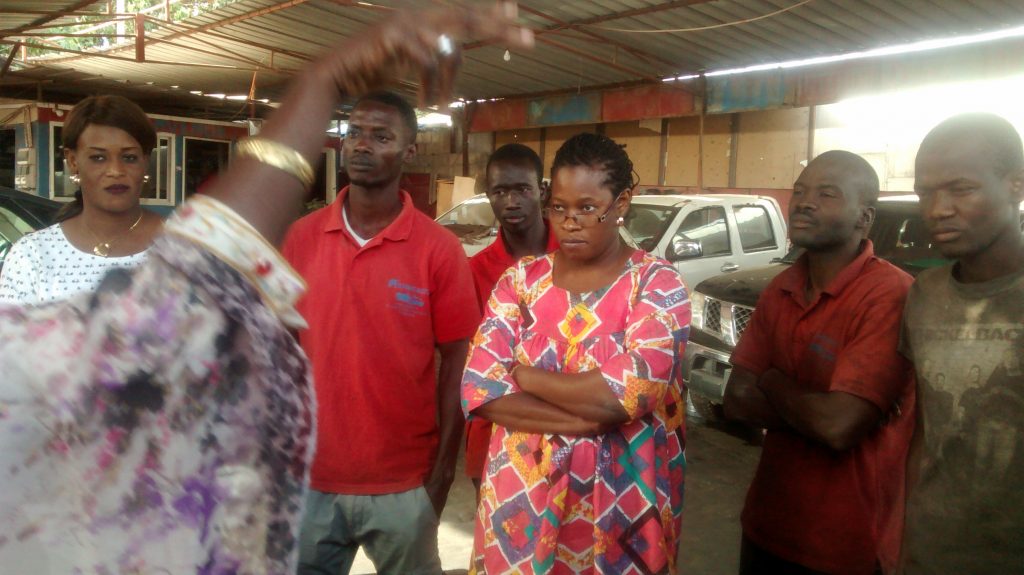
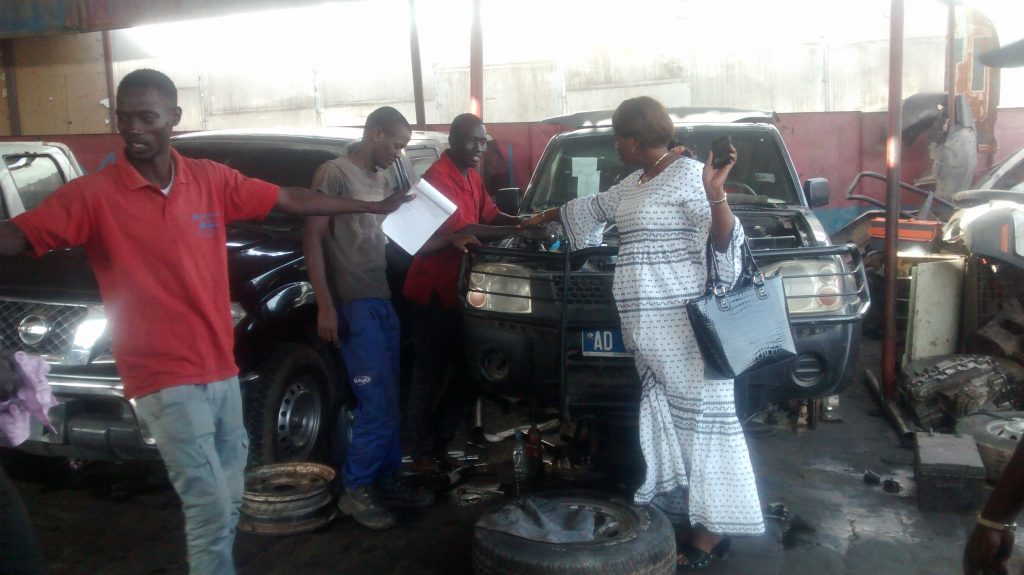

 The beneficiaries' evaluation of their training was conducted in two ways. One of the evaluations was done in writing and the other is represented by pictures. Thus, all beneficiaries were able to make a fair evaluation and especially in anonymity. See the following image of the two types of evaluation.
The beneficiaries' evaluation of their training was conducted in two ways. One of the evaluations was done in writing and the other is represented by pictures. Thus, all beneficiaries were able to make a fair evaluation and especially in anonymity. See the following image of the two types of evaluation.
 Mrs. BA is providing additional information to a recipient.
Mrs. BA is providing additional information to a recipient.
 To end, here is a testimonial from a beneficiary (it’s in French).
[video width="1280" height="720" mp4="/uploads/Import/VID_20171208_111249349_2024-04-18-193611_ndhf.mp4"][/video]
To end, here is a testimonial from a beneficiary (it’s in French).
[video width="1280" height="720" mp4="/uploads/Import/VID_20171208_111249349_2024-04-18-193611_ndhf.mp4"][/video]
